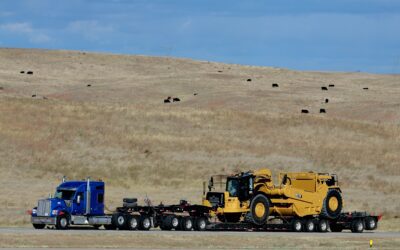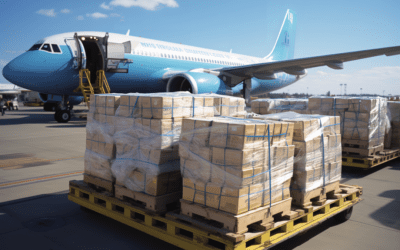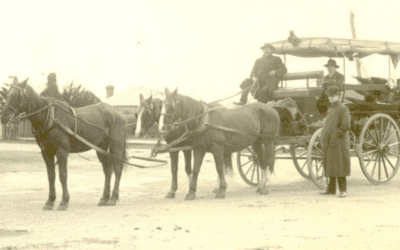There’s never been a better time to join the booming transportation industry. The need for truck drivers is projected to increase by 6% over the next decade. The trucking industry accounts for over 75% of the total freight moved within the U.S. While the need for drivers continues to increase, the total number of drivers in the workforce is steadily dwindling. Trucking companies are now offering higher wages, better benefits, and more flexible hours to attract more drivers.
Article Overview
How to Get a CDL
If you’re interested in becoming a driver, you’ll first need to get your Commercial Driver’s License (CDL). The basic requirements for getting a CDL are federally mandated, but some states have additional regulations. It is a good idea to check your state’s specific requirements before applying.
Application Process
When you’re ready to fill out your application, you will need to provide proof of the following:
- Social security number
- Your identity
- Proof of residency
Although some states have more specific forms of social security that you may need to provide, most states will accept your social security card, a Medicare ID card, or a current military ID.
Proof of identity can be varied across different states, but some of the most common forms of identification include a U.S. birth certificate, U.S. passport, military ID, certificate of citizenship, permanent resident card, or temporary resident ID. There are several other methods of identification that some states may or may not accept, so be sure to research your state’s specific requirements.
States also differ in what they require for proof of residency, but most states only need a single utility bill. California, however, is an example of a state that requires two or three different documents to prove residency. We may sound like a broken record at this point, but it really is best to ensure that you have everything your state requires to apply for a CDL.
Medical Forms and Examinations
After providing all of the necessary proof of residency, social security number, and identification, you will then need to prove that you are medically able to drive a commercial vehicle. The vision and knowledge test will take place during the CDL license exams, but a new law requires more in-depth medical reports.
Thanks to the new law, after 2022, all CDL applicants must supply two forms to their state’s commercial driver’s licensing agency: the Medical Examination Report Form (MCSA-5875) and the Medical Examiner’s Certificate Form (MCSA-5876). If you wish to drive interstate, you must use a pre-approved medical examiner from the National Registry of Certified Medical Examiners.
Once you’ve passed all the tests, you will receive your Commercial Learner’s Permit (CLP). The Code of Federal Regulations mandates that you must hold your CLP for a minimum of 14 days before taking the road skills test.
Keep in mind, drivers must bring their own vehicle for the test. If all goes well, you will be granted a CDL license, but the journey doesn’t stop there. You can apply for different license classes, such as a Class A, Class B, or Class C license. Each class has its own requirements and equipment associated with them.

Class A License
You will need a Class A license to drive a combination of vehicles that weigh over 26,000lbs by a vehicle over 10,000lbs. In other words, any commercial vehicle with trailers or semi-trailers with two or more axles requires a Class A license. To obtain a Class A license, you’ll need to do the following:
- Get a CDL
- Complete driver training from FMCSA-approved training providers
- Pass the Combination Vehicles knowledge test
- Bring a Class A vehicle to the road skills test
- Apply for class A endorsements
Class B License
A Class B license allows you to drive a single vehicle over 26,000lbs. You will not need endorsements for multiple trailers because most of the weight is in a single vehicle. To obtain a Class B license, you’ll need to do the following:
- Get a CDL
- Complete driver training from FMCSA-approved training providers
- Pass general CDL knowledge test
- Bring a Class B vehicle to the road skills test
- Apply for any necessary endorsements (air brakes, tanks, etc)
Class C License
A Class C license grants the driver permission to drive a vehicle that transports more than 16 passengers, and to transport hazardous materials. You will need to apply for special endorsements, such as the passenger transport endorsement. If you’re driving a school bus, you’ll need the school bus driver endorsement and the passenger endorsement. For hazardous materials, you’ll need the hazmat endorsement as well as undergoing any additional state and TSA background checks. To obtain a Class C license, you’ll need to do the following:
- Get a CDL
- Pass general CDL knowledge test
- Bring a Class C vehicle to the road skills test
- Apply for any necessary endorsements (passenger, hazmat, etc.)
CDL Laws for 2022 and Beyond
As mentioned earlier, new laws are in effect that will impact entry-level drivers who wish to get their CDL. The new rules do not apply retroactively, so if you received a CDL before February 7, 2022, you will not need to retake any courses or tests. For everyone else, there are a few changes that are worth noting.
- Entry-level driver Training (ELDT)
Drivers hoping to get their CDL must first pass the ELDT course before proceeding to formal CDL training. This course covers 31 topics and includes 19 mandated behind-the-wheel skills. Drivers must pass with a score of at least 80% before receiving further training.
- Training Requirements
All training must be completed with an approved provider from the FMCSA Training Provider Registry. Schools have a self-certification process that they must follow to be on the list. This applies to both in-person and online training. Instructors will also need to complete special training of their own for behind-the-wheel courses and driving theory courses.
- Department of Transportation (DOT) Management
Once training is complete, the provider must report it to the DOT before drivers are allowed to continue through the steps. The State Drivers License Agency will verify with the DOT that the training was completed and implemented correctly according to the new standards. Once that is done, drivers may continue on to the CDL knowledge test.
Will These New Rules Apply to You?
The new requirements apply to the following:
- Entry-level Class A or Class B drivers
- Drivers upgrading their licenses
- Drivers who wish to obtain a special endorsement
Start Driving
Once you obtain your CDL, regardless of which class license you hold, it’s important to leverage a strong carrier or 3PL network and technology stack to keep your business running. If you need help getting started, contact our team today to become a carrier with KCH Transportation!






